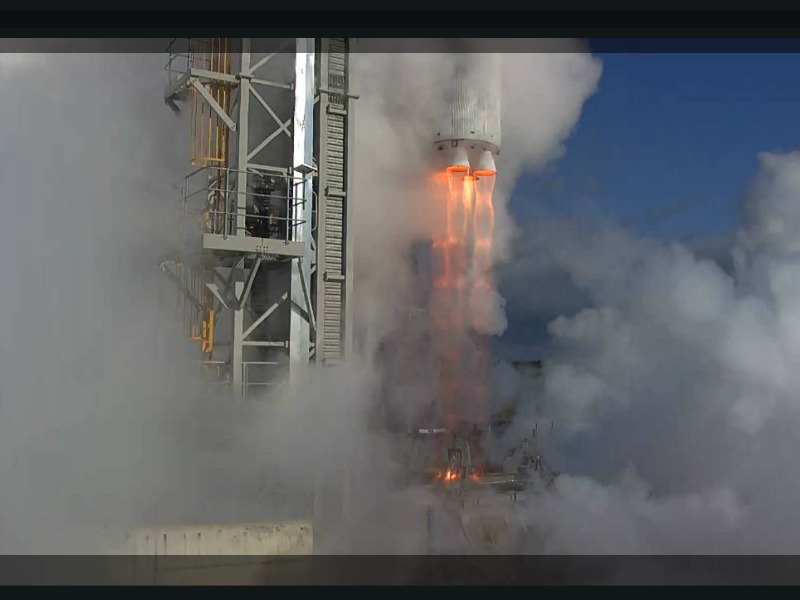The flight was brief, lasting just 14 seconds or so, but Gilmour Space Technologies chief executive Adam Gilmour says the first test flight for its Eris orbital vehicle felt like “a massive weight off the shoulders.”
Speaking to InnovationAus.com just one day after the four engines of the Eris first stage boosters fired-up to lift the vehicle off the pad at the company’s Bowen Orbital Spaceport, Mr Gilmour said it was a relief for the crew to get a first mission under its belt.
While he would have like more flight time, he says he is happy. The company had set itself the goal of reaching orbit, but had been saying that just clearing the pad would be considered a worthwhile success.
You can listen to the full interview with Adam Gilmour here, where he talks through some of the technical issues the crew faced on launch day, and outlines the way forward for the Eris TestFlight 2 mission.
Just having its four Sirius hybrid rocket motors firing efficiently with enough thrust to begin its ascent was hugely satisfying, Mr Gilmour said.
“When it went off, geez it looked good. We were just we’re screaming. I think I was screaming louder than I’ve ever screamed in my life. I just knew this thing was gonna get off the pad,” Mr Gilmour said.
“I just knew we were on to a good thing, that we have got something that’s going to work, and even if we’re in the air for a few seconds, it doesn’t matter, this thing’s going to work.
One engine flamed out after about 8 seconds, and when another engine cut out, the vehicle sank back to the ground, maneuvered to land in a paddock adjacent to the launchpad.
Adam Gimour said the company is looking at a six-month turnaround before getting to a second launch.
“That’s just the reality of how long it takes you to finish building stuff and testing it,” he said. “We still left a decent amount of the rocket unfinished.”
“The whole structure is done, but we haven’t made new hybrid motors because we wanted to see what happened in this test, and I’m glad we waited.”
“We’re going to do a few more engine tests ahead of us before we finish the manufacture. We’ve got new designs already, and then just anything else that we find that went wrong, we will fix it on this [new] rocket, because we really want the next rocket to have a very, very good chance of going to orbit.”

The relief is palpable. Mr Gilmour said the team had been concerned about the Testflight 1 vehicle for some time, because it had been sitting as a fully integrated vehicle in the salt air of the Bowen at the launch site for so long.
“Rockets are not designed to finish the build, and then go up to the launch site and wait at the launch site for almost two years,” he said.
“And that’s what we had to go through to wait for our approvals. And the launch site is a kilometer away from the ocean. It’s not a good environment for metal things, and things that corrode.”
“The rocket engines were sitting up there for almost two years, and we definitely assigned a lot of risk to them because of their age. So I was really happy that it got off the pad,” Mr Gilmour said.
“I think it was a bit of an old clunker that got off the pad. The next rocket that goes up there, we will basically finish it, test it, send it there and launch it [quickly].
“It’ll be like a new car, a brand new rocket.”
Do you know more? Contact James Riley via Email.

